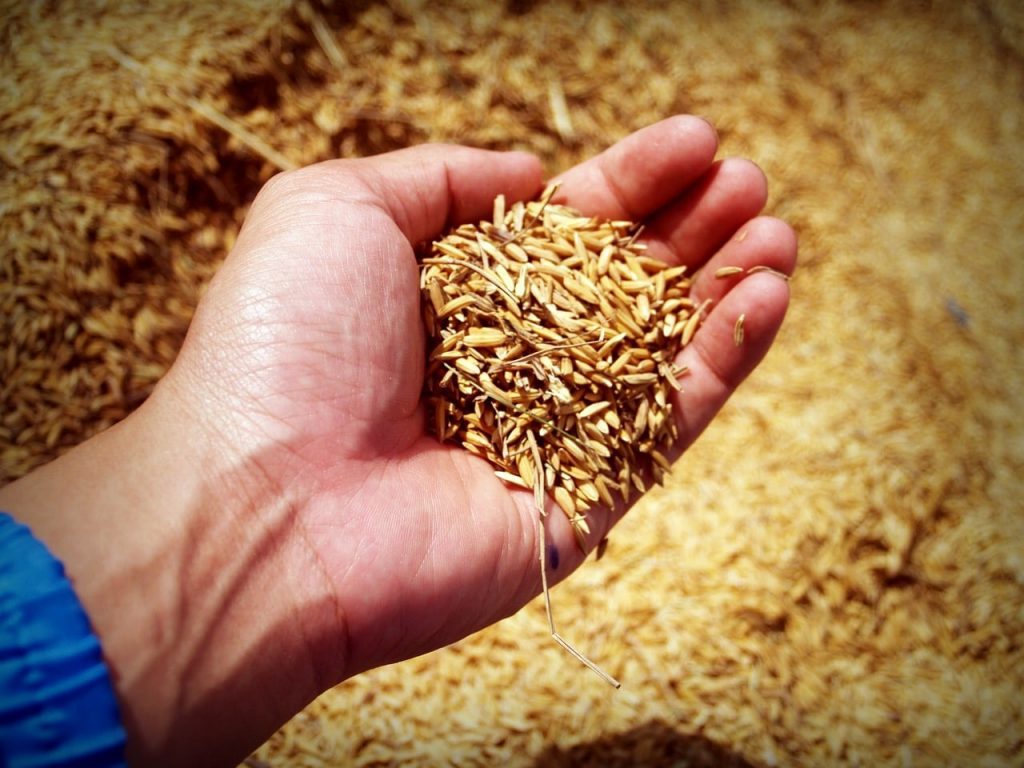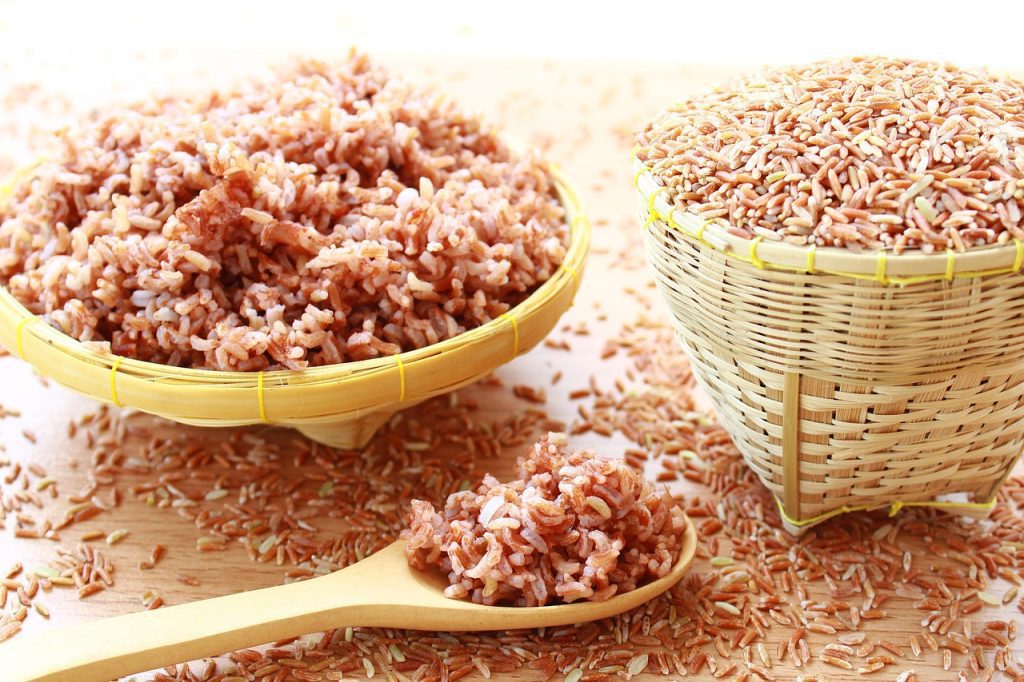Red rice and brown rice are considered to be similar in numerous aspects of red rice vs. brown rice – can a clear distinction be made?
What is the difference between red rice and brown rice?
How can you make out the difference between white and brown rice?
Which rice is best for your health and nutritional benefits? The following article answers all of the above questions and some information on red rice vs. brown rice.
Table of Contents
Types Of Rice

Why are certain types of rice called plain or white rice and others given special names such as red rice, brown rice, matta rice, etc ? Well, each of these varies in their quality, texture, and the nutritional benefits that they have to offer. The preparation methods of rice may vary as well, depending upon the geographical location and culture.
The calorie content is different for different types of rice as well. Let us look into these different types of rice, the areas in which they vary, and the benefits of each kind.
1. White rice
A single serving of white rice contains over 53 grams of carbohydrate. A tiny portion of it can be classified as fibre. Mostly, plain or white can be classified as starchy and sugary content – it serves the simple purpose of providing energy.
Consuming rice supports our bones, nerves, and muscles, improves our colon health, and even lowers the risk of heart disease.
2. Brown rice
Brown rice is a type of rice that is associated with a healthy diet and healthy eating. Brown rice comes in relatively unprocessed form – it comes in a less unprocessed way than white rice.
Brown rice contains vitamins, minerals, and antioxidants – it is a rich source of these components, often lacking in plain, white rice.
3. Red rice
What is red rice? Well, red rice is a relatively new variety of rice that is cultivated in several geographical regions and is well known for its rich nutrient content. It obtains its red color from the anthocyanins that are a part of it.
Anthocyanins, is a name given to a specific type of antioxidant. Red rice refers to the rice that has a red husk, characterized by a nutty flavor.
Related Reading:
There are different types of rice available in the Indian market. Find out which rice suits you the best from the multiple varieties of rice.
Difference Between Different Types Of Rice

1. Brown Rice And White Rice
When it comes to the difference between white rice and brown rice, we can say that brown rice is much more nutritious than white rice. The bran is present in brown rice and not in white rice. The presence of endosperm in brown rice can be cited as a major brown rice vs. white rice difference. Another significant difference between brown rice and white rice is the content of vitamins and minerals.
In the calorie race between white rice vs. brown rice, brown rice is more nutritious and has a much higher calorie content than white rice. That being said, the protein and fat content are also much more in comparison.
Related Reading:
2. Matta Rice vs. Brown Rice
Matta rice, also known as parboiled rice, originates from Kerala, is different from brown rice in the sense that the rice is boiled before the de-husking process is done. The fibre content is high and arsenic; glycemic content is low in matte rice than brown rice.
3. Red Rice Vs. Brown Rice
The nutritional composition of brown rice and red rice, is, in fact, quite similar. The layer of bran and the cereal germ is present in both red rice and brown rice. Chances of obesity are reduced, and high cholesterol can be prevented by the consumption of red rice and brown rice.
So, what is that one factor that sets red rice and brown rice apart? That is the presence of antioxidants in red rice. The presence of iron, zinc, and selenium give red rice a certain amount of edge. It can be considered the most nutritious variety of rice. When it is about red rice vs. brown rice, it’s the red rice that outweighs the brown rice.
4. White Rice vs. Red Rice
When it comes to white vs. red rice, there are considerable differences in red rice nutrition facts. What comes in mind when we think of red rice vs. white rice? There is a major difference between the unpolished variety of rice and red rice. In the battle of red rice vs white rice, red rice certainly have much more nutritional value compared to white rice.
Some other major differentiators are the red rice vs. white rice nutrition and calories. Red rice is considered a much healthier alternative to white rice if we speak of the benefits of red rice vs. white rice.
Related Reading:
Planning to switch to a weight-loss diet? Try adding brown rice to your diet.
Benefits Of Having Red Rice
Overall, red rice has a great taste and flavor both. It is hugely beneficial when it comes to weight loss, for maintaining great skin and managing diabetes. Now, a comparison will arise quite naturally between white rice, red rice, and brown rice. In general, red rice and brown rice are considered to be healthy alternatives to white rice.
Now let us delve into the details a bit. What are the benefits of red rice over white rice?
1. Presence of Antioxidants
First and foremost, the presence of antioxidants in red rice helps counteract free radicals – it can repair damaged tissue and heal wounds.
2. High Amount of Vitamin B6
Red rice contains a high amount of Vitamin B6 – which helps create red blood cells and build DNA.
3. Lowers Cholesterol
Red rice lowers excessive levels of cholesterol in the body- added benefit; it keeps the stomach full for a relatively long period owing to its high nutritive content without contributing to obesity and adding unhealthy fat in the body.
4. Lowers the risk of Hear Disease
This next point is related to the previous one – quite obviously, red rice lowers the risk for heart disease since it helps fight obesity.
5. Maintain Blood Glucose
Red rice helps to keep the blood glucose at a manageable level.
6. Bone Health
Red rice is considered excellent for bone health.
7. High Fiber Content
The high fiber content of red rice ensures that the process of digestion takes place efficiently.
Related Reading:
Read this buying guide to find the best rice cooker.
Wrapping UP
When it comes to Red Rice Vs. Brown Rice, red rice is more beneficial due to its variety in vitamin and mineral content. Have you made the switch yet?
Which rice would you like to include in your daily diet?
Frequently Asked Questions
Here we have answered a few interesting FAQs about the difference between red rice and brown rice.
1. Which is healthier, brown or red rice?
Compared to the nutritional content, both brown and red rice are nutritious and healthier. However, red rice has a compound called anthocyanin, due to which it is red, and that gives a boost of antioxidants.
2. Is red rice better than brown rice for weight loss?
Both the rice, red and brown, are a better choice for weight loss as they have a higher content of dietary fiber and nutritional content than white rice.
3. Is red rice high on sugar?
Red rice has a low glycemic index, which makes it suitable for a diabetic diet.
4. Can red rice be eaten everyday?
Adequate consumption of red rice is a great option for weight watchers. It improves digestion health over time.
However, excess consumption can lead to indigestion.


